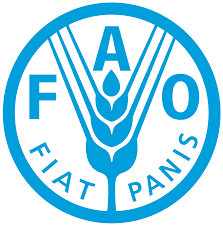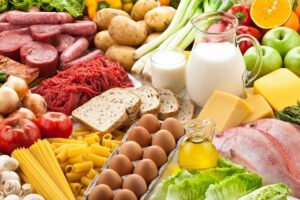
The level of outages is now one of the highest since the summer of 2024, resulting in over 30% of the network of the largest mobile operator Kyivstar being without power, says the company’s CEO Alexander Komarov, advising fixed internet users to ensure they have backup power for their routers so that everyone can stay connected for longer.
“Today is a very difficult day. One of the most difficult since the summer of 2024. As of 9 a.m., more than 30% of the network is without power, almost evenly distributed across the country. Five regional technology centers are running on generators,” Komarov wrote on Facebook on Thursday morning.
According to him, for the most part, the network has been running on batteries and generators for most of the day. “Unfortunately, about 4% of sites have lost their functionality,” the CEO said.
He recalled that in preparation for prolonged blackouts, the company had reserved 99% of the Home Internet network for up to 12 hours of autonomous operation before the start of autumn, installing more than 80,000 modern LiFePO4 batteries and investing almost UAH 300 million in this in 2024-2025.
“This way, when there is no electricity, the fixed network remains operational. But in order to use the Internet for as long as possible, subscribers should do their part of the ‘backup’ — connect their routers to a backup power supply. A power bank, uninterruptible power supply (UPS), or charging station will suffice,” Komarov explained.
At the same time, according to his data, as of mid-November, only 15-20% of Home Internet subscribers had taken care of backup power for their routers, and during the recent total blackout in the Poltava region, the customer reserve was only 2%.
“And then everything is interconnected: users switch to mobile Internet, the load on base stations increases, their autonomous operation time is reduced, and the quality of mobile communication and data transfer speed deteriorate,” the head of the largest mobile operator described the current situation.
He called on customers to do their part to provide backup solutions for the network so that the country remains connected.
As noted, after the attack on November 8 and subsequent ones, Ukrenergo imposes restrictions on up to four queues every day, which in many regions means no electricity for more than 12 hours a day.
Kyivstar served 22.5 million mobile subscribers in the third quarter of 2025, which is 3.6% less than a year earlier, but the number of 4G customers grew by 2.4% to 15 million. In addition, it had more than 1.1 million Home Internet subscribers. In early September, Komarov announced that the company had over 16,000 telecom sites.

Business disruption is a serious threat to food and beverage companies, according to the Global Food and Beverage Risk Outlook 2024 by global consulting and brokerage firm WTW.
According to its website, nearly half (48%) of food and beverage companies cited business interruption as the biggest internal risk to their success.
This was followed by supply chain risk, cited by 40% of companies. Managing turbulence and potential disruption has become standard practice in the food and beverage sector, aided by global instability, conflict, climate change and the cost of living crisis. As a result, companies are cautious about their future.
More than 41% of food and beverage companies cited improving liquidity as the top strategic goal for the next two years, ensuring they have the financial resources to weather further shocks. Other key priorities include cost reduction, which 38% of companies focus on, and business stabilization (a goal for 35% of companies).
In addition, companies are increasingly questioning their ability to keep up with rapidly changing consumer tastes and preferences: 36% see this as a risk. However, this challenge also represents an area of opportunity, as companies can capitalize on the latest consumer trends.
Despite the challenges, food and beverage companies are actively working to improve resilience. Nearly half (47%) review their business continuity plans every six months and 31% do so quarterly.
However, more than a quarter 29% of these businesses reported that their insurance policies only cover property damage in the event of extreme weather, not including business interruption coverage, which is necessary for recovery and resilience.

UT Company, created by co-owners of EVA and Varus chains Valeriy Kiptyk and Ruslan Shostak, has won a tender of the State Logistics Operator (DOT) for the supply of food to military units in one of Ukraine’s regions, the press service of Terwin Group reports.
“Ukrainian Transparent Company has committed itself to supplying food to military units in one of Ukraine’s regions by offering the best conditions at the tender held by the State Logistics Service. This is a pilot project that will last for two months and will significantly save the state budget,” the press release says.
The company did not disclose the cost of the tender. According to Shostak, the company aims to help the state make the procurement process transparent and efficient.
“Our main task is to restore trust in the state and business pride in cooperation with the authorities. And I want to emphasize that we supply products directly from domestic manufacturers to soldiers without extra charges; we finance all administrative costs on our own, we do not add them to the price – this is our contribution,” Shostak was quoted as saying in the press release.
According to Forbes Ukraine, the supplies will be delivered to military units in Zaporizhzhia region.
As reported, in October 2023, 17 companies managed by Shostak, employing a total of 30,000 people, merged into TERWIN. These are Omega LLC, Rusch, Tervin Group, Tixid, Tavria Hub, Mizhtneva, Formsite, Digamma, Milton Group, Saltora Plus, Firm Ariant, Novoe Stroitelstvo 2017, Altair D, Apex H, Aspect D, Lattero, and the Ruslan Shostak Charitable Foundation. The total assets of the corporation are estimated at $1.6 billion. The total revenue of the companies in the pre-war period reached $2 billion, and in 2023 it was expected to reach $1.7 billion.
ARMED FORCES, EVA, FOOD, VARUS

World food prices fell 9.6% in April from a year earlier, the FAO (UN food and agriculture organization) said in its monthly report on Friday.
Meanwhile, March’s price index was revised up 0.3 percent, the document noted on its website.
The cereal price index rose 0.3 percent in April from March after three months of declines. World wheat export prices stabilized in April as strong competition among major exporters offset concerns about unfavorable crop conditions in several countries in the European Union, Russia and the United States. Export prices for corn were boosted by strong demand amid growing logistical disruptions from infrastructure damage in Ukraine and production concerns in Brazil ahead of the main harvest.
The vegetable oil price index also rose 0.3% year-on-year in March to a 13-month high. FAO indicated that higher quotations for sunflower and rapeseed oil offset a slight decline in palm and soybean oil prices.
The Meat Price Index increased 1.6 percent in April from the previous month as international poultry, beef and lamb prices rose. World pork prices declined slightly, reflecting sluggish domestic demand in Western Europe and persistently sluggish demand from leading importers, especially China.
The sugar price index declined 4.4% from March and was 14.7% below the April 2023 level. The decline was attributed to an improved global supply outlook, particularly due to higher than previously expected production in India and Thailand, as well as improved weather conditions in Brazil.
The Dairy Price Index declined 0.3% after six months of gains, driven by sluggish spot import demand for skim milk powder and lower global cheese prices due to a stronger U.S. dollar. In contrast, world butter prices rose on the back of robust import demand.

Approximately 1.05 billion tons, or 19% of all food produced in the world, was wasted in 2022, while more than 780 million people continued to struggle with hunger, the UN says.
“In 2022, households on all continents wasted more than 1 billion meals a day, while 783 million people suffered from hunger and a third of the world’s population faced food insecurity,” the report, published on the website of the United Nations Environment Programme (UNEP), says.
According to the report, in 2022, the world produced 1.05 billion tons of food waste, which is 132 kg per capita or almost a fifth of all food available to consumers. Households accounted for 60% of food waste, catering companies for 28%, and retailers for another 12%.
“Food waste is a global tragedy. Today, millions of people are starving while food is simply thrown away,” said UNEP Executive Director Inger Andersen.
“Such waste causes significant damage to the climate and nature,” she added.
According to the UNEP, food waste is responsible for 8-10% of annual global greenhouse gas emissions and significant biodiversity losses.
“The damage to the global economy from food losses and food waste is estimated at about $1 trillion,” UNEP said.
The report emphasizes that as of 2022, only 21 countries have included reducing food loss and food waste in their national climate agenda.

Trade statistics in the first half of 2023 compared to the same period last year showed an increase in trade in goods between Norway and Ukraine by 26%, the Norwegian-Ukrainian Chamber of Commerce (NUCC) reported.
“An important and notable trend is the significant 31% increase in Norwegian imports from Ukraine. This increase was primarily driven by growing demand for food and agricultural products used in feed production,” the NUTP said.
According to the report, in other sectors such as manufacturing, engineering, furniture and clothing, the level of trade remained stable.
A similar revival in Norwegian-Ukrainian trade relations was seen in the supply of goods from Norway to Ukraine, which grew by 25% in the first half of the year compared to last year’s figures.
Growth in seafood trade, according to the NUTP, was “particularly impressive” – up 18% compared to previous years of cooperation. Export revenue for this product category rose by 25% in monetary terms, driven by higher prices.
In addition, Norway increased its exports of electric cars in the reporting period – more than 800 units were delivered to Ukraine in June alone. “These exports account for about one-third of all imports of electric cars to Ukraine, which made Ukraine the most important export market for used Norwegian electric cars,” NUTP summarized.